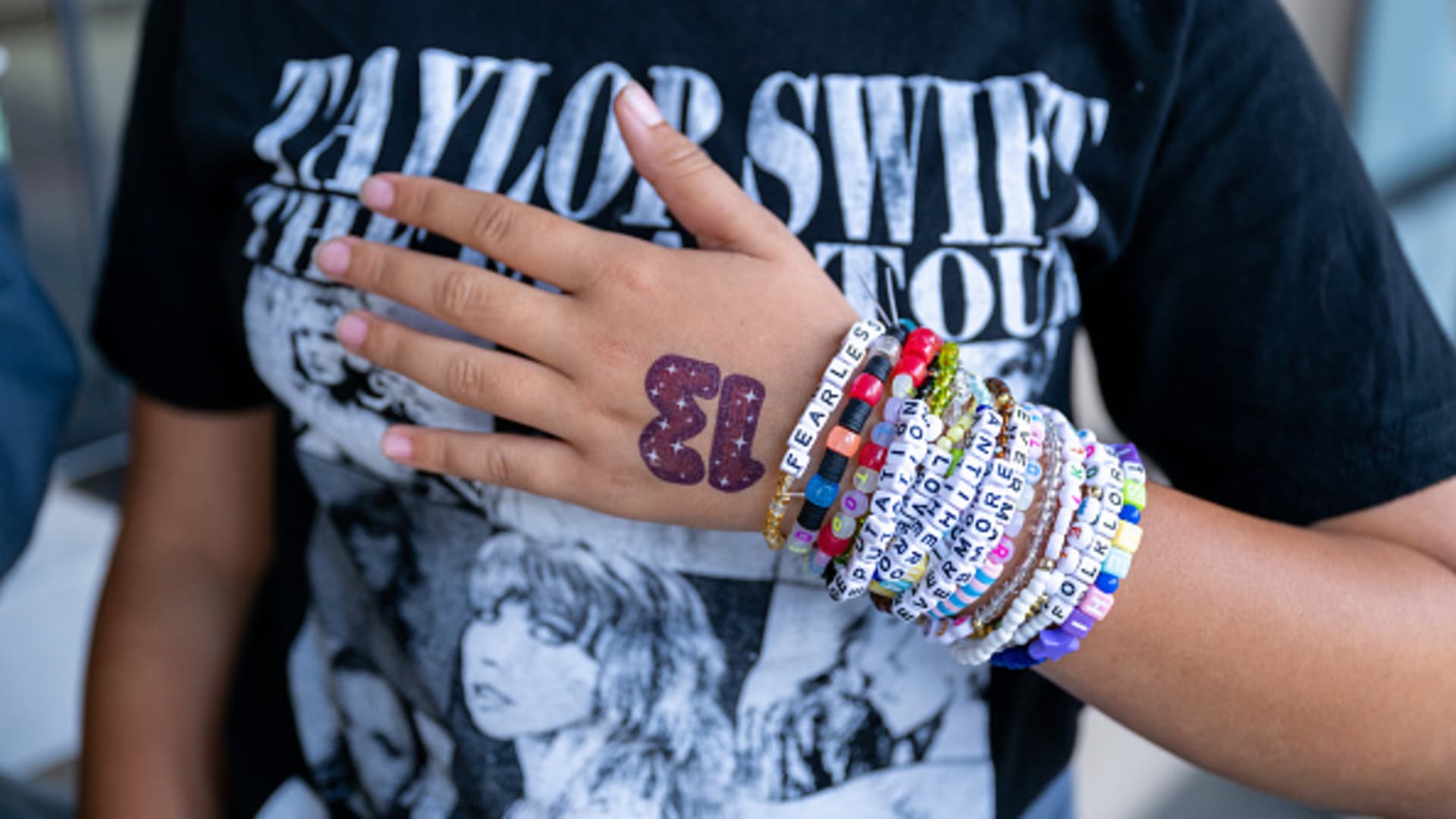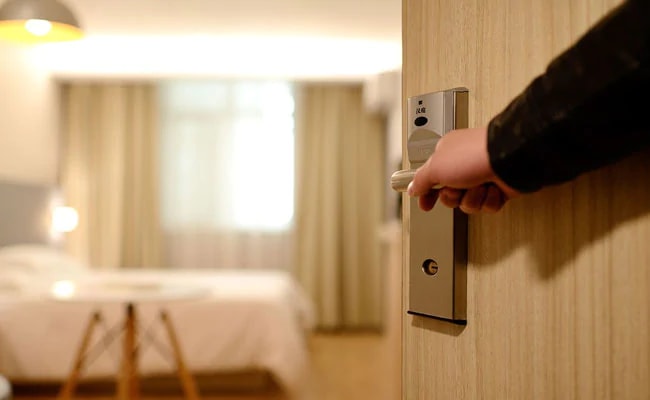The Communal Dining Table Gamble


Communal dining is all the rage. What if you’re seated next to someone who sucks?
At a recent dinner, I faced the worst fate that can befall a diner: There was an annoying guy at the restaurant. He spoke too loudly about boring things, shared unsolicited “expertise” on subjects it was clear he knew little about, and wore an ugly jacket. He never said anything offensive or inappropriate, but ugh, he just sucked.
It would be one thing if I could whisper and gossip with the group I was dining with that night about the odious man across the room. But no, the worst part is that I was seated next to him. The restaurant featured a communal table, meant to foster connection and a tablewide desire to get out of your shell. But I was shoulder to shoulder with a guy whose laugh shot chills up my spine, whose every sentence elicited eyerolls, asking him to pass the shrimp.
In food media, you’re always a stone’s throw away from someone talking about how food brings people together. It’s one of those phrases that emanates profundity but ultimately is devoid of much meaning; food brings people together because usually you have to be where the food is in order to eat it. Any further revelations — from inevitable community-building to finding common ground in opposing politics — are no guarantee.
In fact, the togetherness of eating can often backfire. Think of the arguments around the Thanksgiving table one must steel themselves for every year, or the endless debate about under what circumstances a baby should be in a restaurant. It’s a minefield out there, and for diners looking to spend ever-dwindling cash on a meal where they can’t even guarantee they’ll like their dining companions, a communal table presents an extra calculation. Are the supposed benefits of communal dining worth the risk of connecting with new people in ways you never imagined or the mortifying ordeal of having a three-hour meal next to someone you can’t stand?
This hasn’t stopped a new crop of fine dining establishments from attempting to bring people even more together by serving their food in the most “together” way possible. Over the past few years, the everyone-gather-round party vibe has expanded from cafeteria-style restaurants and Le Pain Quotidien. Perhaps it started with the community table at Blue Hill at Stone Barns. Dinner Party in Brooklyn and Beast in Portland were early adopters, as was Mosquito Supper Club in New Orleans. But as the “loneliness epidemic” continues to affect people, more restaurants are using this to create new social opportunities. There are communal tables at Maty’s in Miami and Kann in Portland. And Kwame Onwuachi’s Dōgon in D.C. just added communal standing dining.
Emily Pilkington, the general manager at Mosquito Supper Club, says for chef Melissa Martin’s bayou cuisine, this is just the way the food is meant to be experienced. “I think she started it as a supper club as a way to present the food in a similar way that she experienced it growing up, which would have been at one table with her whole family,” says Pilkington.
But aside from the romance of the way a cuisine is “meant” to be experienced, there’s a practicality to the communal table. Some restaurants, like Mosquito Supper Club, serve everything family-style, with the diners passing pots of soup and heaping plates of biscuits around. Others serve things individually plated, but from a set menu. Either way, the format allows the kitchen to fire a limited menu all at once, and sometimes not even have to worry about plating.
This is especially beneficial for a pop-up. Timothy Dearing’s Ūle, a BYOB communal dinner party in Philadelphia, offers one seating a night. Offering a set menu is efficient, especially for a concept without a permanent home (it currently operates out of an undisclosed location in Fishtown). This style of dining is “not my ultimate goal when I actually open up a brick-and-mortar,” says Dearing, but he enjoys seeing “people who don’t know each other sitting next to each other and conversing, talking about food.”
But how do you actually get that conversation to happen? Dearing admits the format is self-selecting. “I think most people come into it understanding that it might be a little uncomfortable at first, but as they’re eating good food, and I’m discussing the basis of the dishes, the inspiration, the ingredients, the farms and stuff like that, and they sip some wine, you can see their shoulders relax a little bit.” But there are always the people who don’t realize it’s communal until they get there, or at some point in the meal realize that this just isn’t their thing. When that happens, it’s up to the restaurant to make sure everything runs smoothly.
Pilkington says she’s never experienced the “worst thing” that could happen with communal dining (“you’re seated next to someone who wants to talk about politics the whole time, and they’re the opposite of yours”), but that “we kind of joke that we’re more like experts in human behavior rather than servers.” Staff is trained on tricks to engage a shy table, like bringing out bread early so people start sharing something, or to reroute conversation, like asking where guests are from so they have a chance to bond over possibly shared origins. They also have the seating down to a science, wrapping larger parties around smaller ones in the middle, so you don’t have a solo diner or a couple sitting at the end of the table awkwardly trying to jump in with the larger groups.
Sitting next to an annoying guy isn’t the worst thing that could have happened that night. I think I was steeling myself for what was. Part of my anxiety at that dinner was being there with my wife, who is trans — would the rest of the table be cool, or would someone say something out of pocket? While writing this piece, I spoke to colleagues and friends about their communal dining experiences. Multiple Black people and POC mentioned experiences where they were seated next to a white patron who clearly wasn’t thrilled to be sharing space with them. The slights aren’t always as public as a loud argument about politics or someone walking out. Sometimes it’s just a look from across the table, making it clear you are not wanted.
Perhaps that anxiety kept me from fully engaging with the table, who were mostly white heterosexual couples. These days, my guard is up more than usual. Maybe I was the one who needed to allow myself to be surprised by new connections. I thought of other communal meals I had where, by the time we got to the main course, we were all sharing wine and giving each other our Instagram handles and, like the final day of summer camp, promising we’d be BFFs forever.
The highs of communal dining can be so much higher than when you’re at a private table, the thrill of an entirely unpredictable evening on top of having a good meal. Unpredictability can also bring deep lows. As I left after that recent meal, I realized that while the dishes had been sublime, the story of the night was about the annoying man. But it made me want to return, to gamble another night to see if the company could match the food. What a risk, but what a reward.









































































































































































